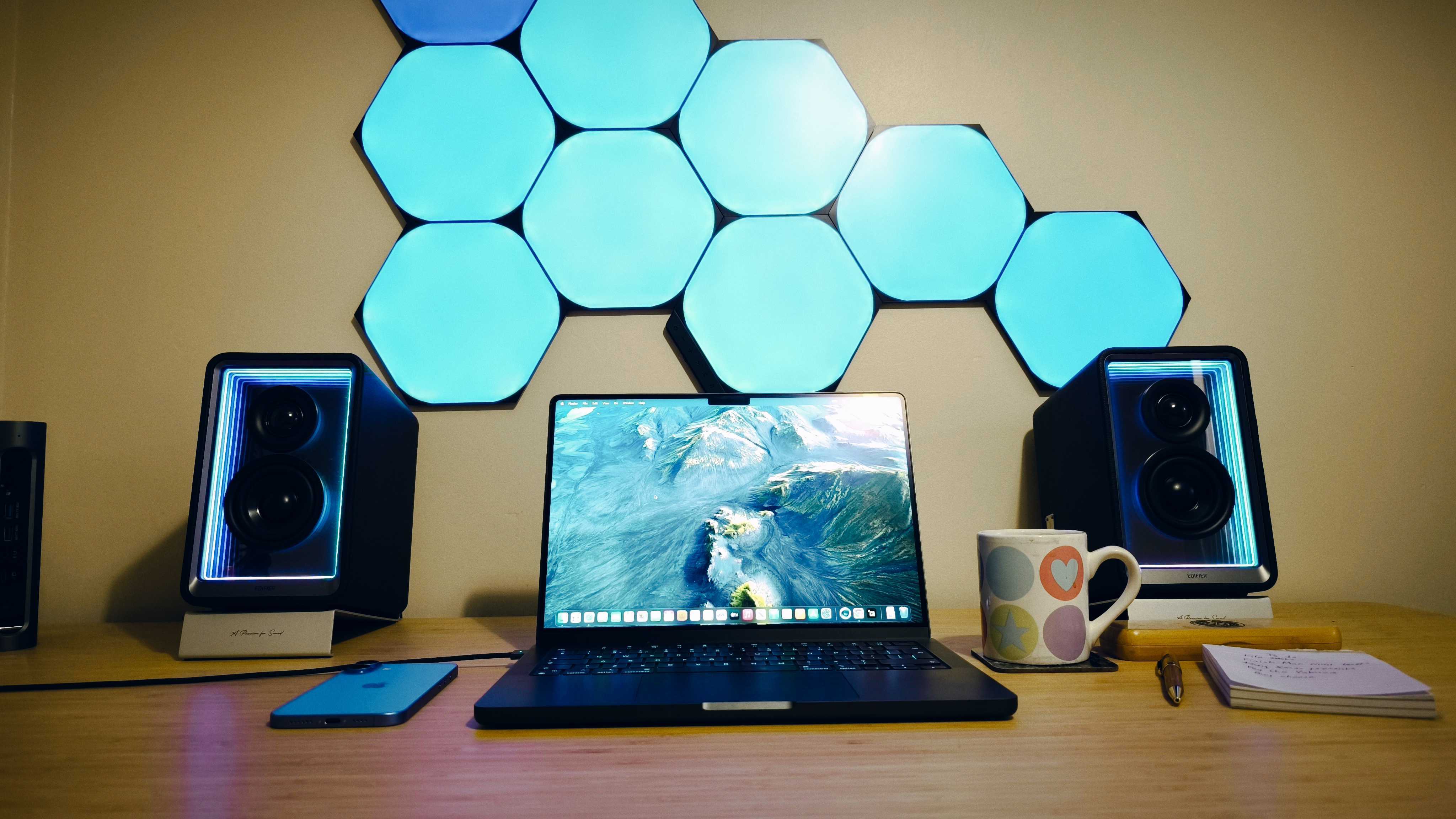Our Verdict
Considering all that this machine can do, is the eufyMake E1 worthy of investment? I’d say it is a resounding yes, but only if printing on materials other than paper is useful, which sounds obvious. If you are an artist looking to sell prints in a novel way, or a maker looking to sell a variety of designs and customisations, then this is a no-brainer. eufyMake says it is a business in a box, and they are right. It performs really well, every time. It pretty much looks after itself too, so very little by way of regular maintenance is needed, and each print is cheaper than using a UV printing service.
For
- Small footprint
- Excellent results on any material
- Good software
- Great service support
- Business in a box
Against
- Needs space around it for the moving bed
- Some odour
Why you can trust Creative Bloq
Printers get a lot of the spotlight and rightly so. 2D printers have been around for so long that not much has moved on with the technology in a long time. Things are changing, though, and eufyMake is leading the charge with its eufyMake E1 UV printer. Billed as a business in a box, this printer allows you to print images on just about any material you care to think of, from wood to metal. Not only that, but it promises to print on multiple shapes, from the perfectly flat to completely round, like glasses and coffee cups. To make the E1 even more appealing, it can also print with depth, add a gloss finish and much more.
For makers, creators and artists, this opens up a whole world of possibilities, from selling more individual prints to merch, assuming the E1 delivers.
Having a lot of experience with photographic and 3D printers I was really excited to try this out for myself and spent a good couple of months trying things out, printing on everything from ceramic and wood, to canvas and acrylic.
A side note, I was unable to test the rotary attachment as it got held in customs but I will update this review once it arrives with me.
Lastly, a thought on pricing. Currently, the E1 is £1257 for the base package. You can save with various bundles, so think about whether you want the rotary attachment or laminator, extra inks etc, as it looks to be jumping over 30% once the campaign ends.
What's in the box?
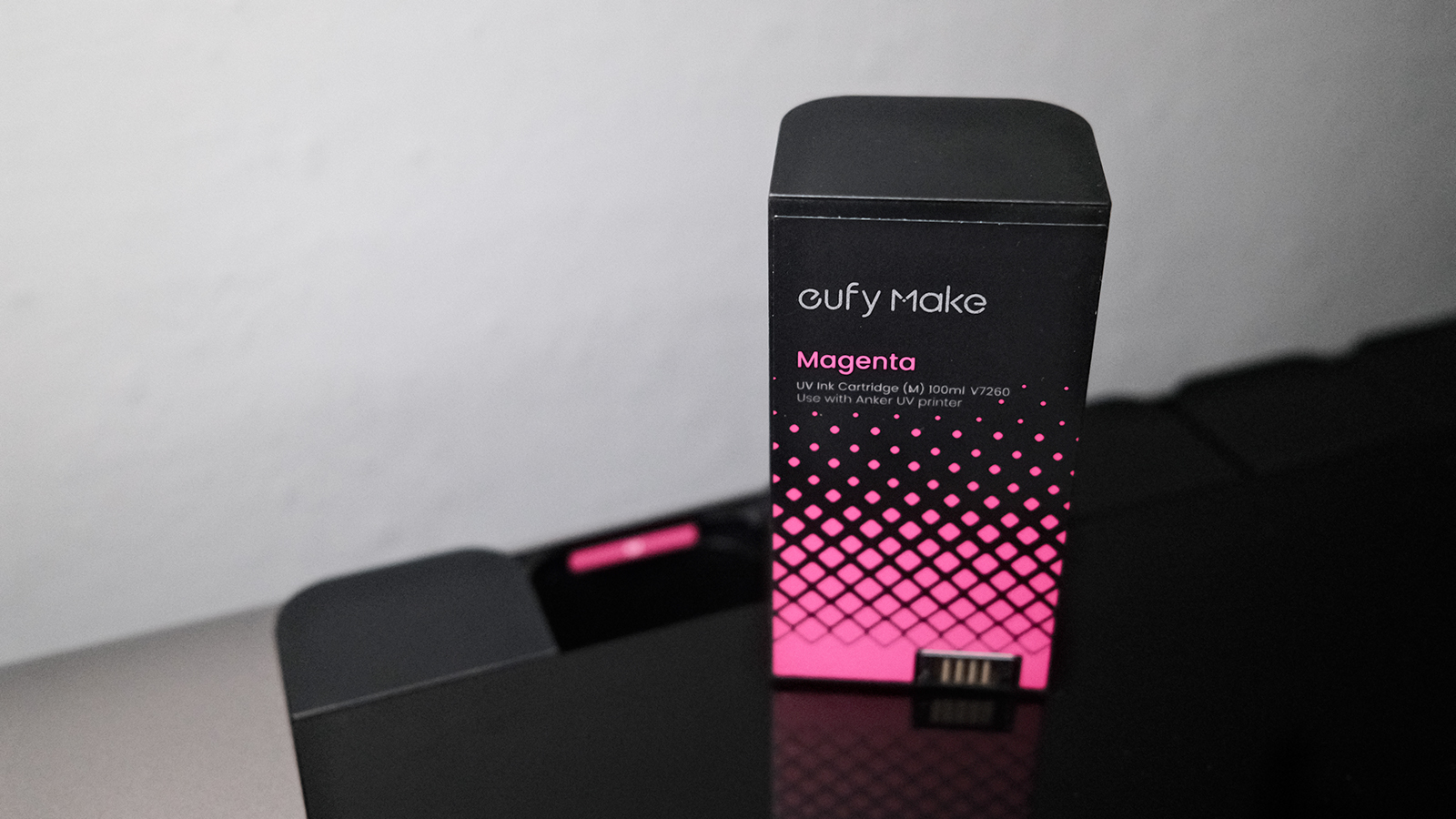
E1 arrived in two large boxes. One housed the printer, along with the two print beds, a set of inks a cleaning head and a power supply. The other had a huge assortment of materials to print, from canvases to ceramic magnets and even a lightbox with some acrylic sheets to print. Everything was well packed and arrived safely.
The E1 is large but manageable. It has a similar footprint to a normal desktop printer but sits a little taller, to allow room for thicker materials and the rotary attachment. It’s worth noting that although the footprint of the E1 is a reasonable size, when in use, you will need extra space to the front and rear, especially when using the larger of the print beds, as it moves back and forward under the print head. Around an extra 40cm front and back is enough.
eufyMake E1: Setup and build
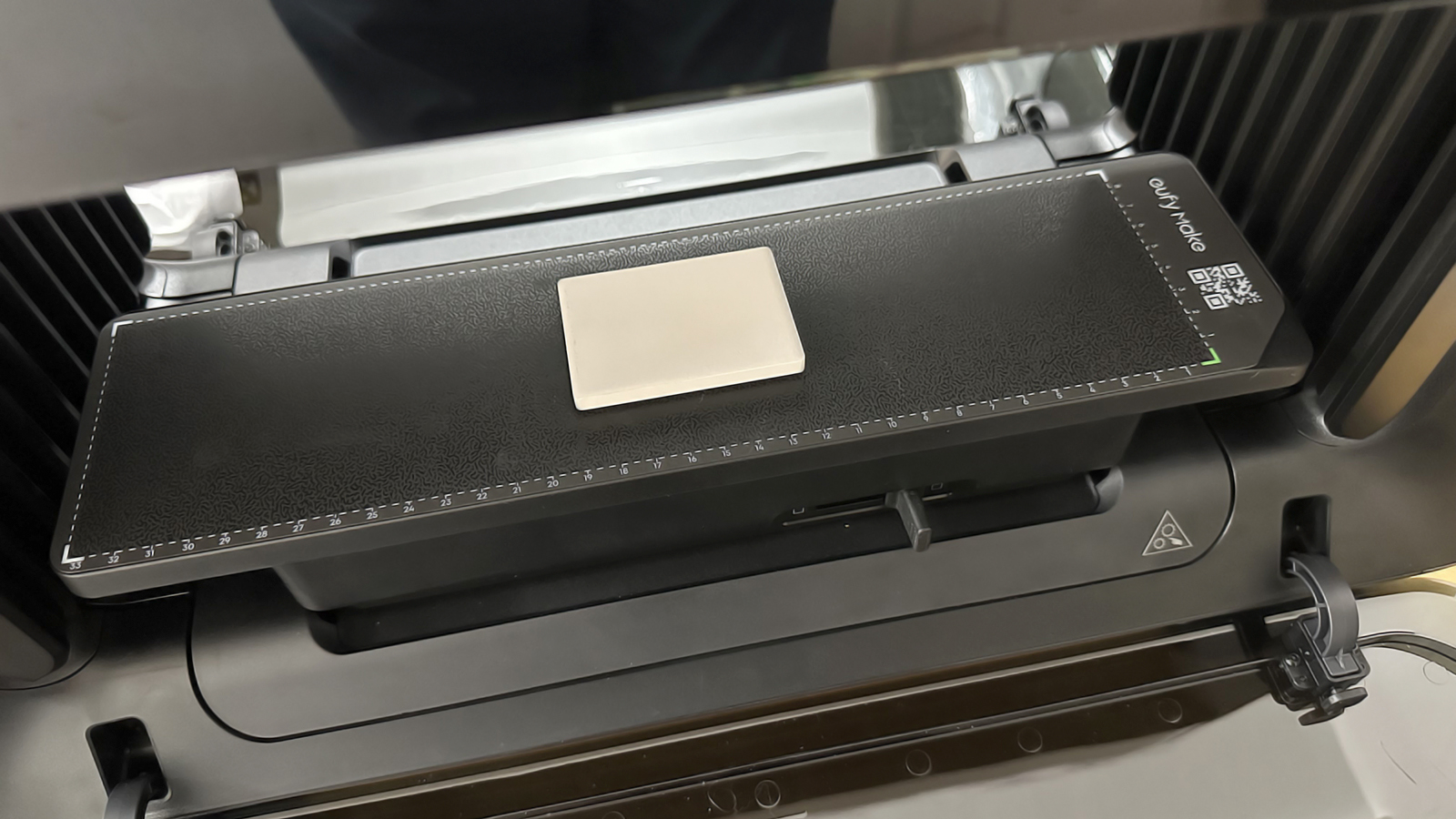
I was pretty excited to set the E1 up and get started but I did come up against a niggling issue. One of the inks wouldn’t register properly, and I kept getting an error message about the print bed. That said, a quick email to Efuy’s service team and they had me up and running in no time. I even got a video from them showing me what I needed to do, as well as a firmware update to fix the ink problem. This was a pre-production issue, so it won’t affect you if you buy one, but it was really refreshing to get such good service and very quickly, too.
The build quality is excellent. Everything feels robust, and the finish is nice. It definitely feels more like a home studio item than a workshop or more industrial unit.
Setup is easy. It’s really just a case of slotting the inks into their section on the top of the machine, adding the cleaning tank on one side and the air filter to the front (which is hidden behind a cover). Then you follow a calibration process, which can be done from your phone using the eufyMake app. It takes around 15 minutes, but there’s little user input in that time. Mostly the machine is doing its thing, until it alerts you its ready for use.
A note on software. You can run the software on a computer or a phone, with little difference in the process. I tried both and in the end stuck with the phone app, as it was more convenient. All the features are there, including calibrations, ink levels, as well as the fun stuff like design, printing from your photo library or the community projects tab. There are some AI tools too, which I’ll talk about later, but be aware there is a small cost to access some of them, using Eufy Coins.
eufyMake E1: Performance
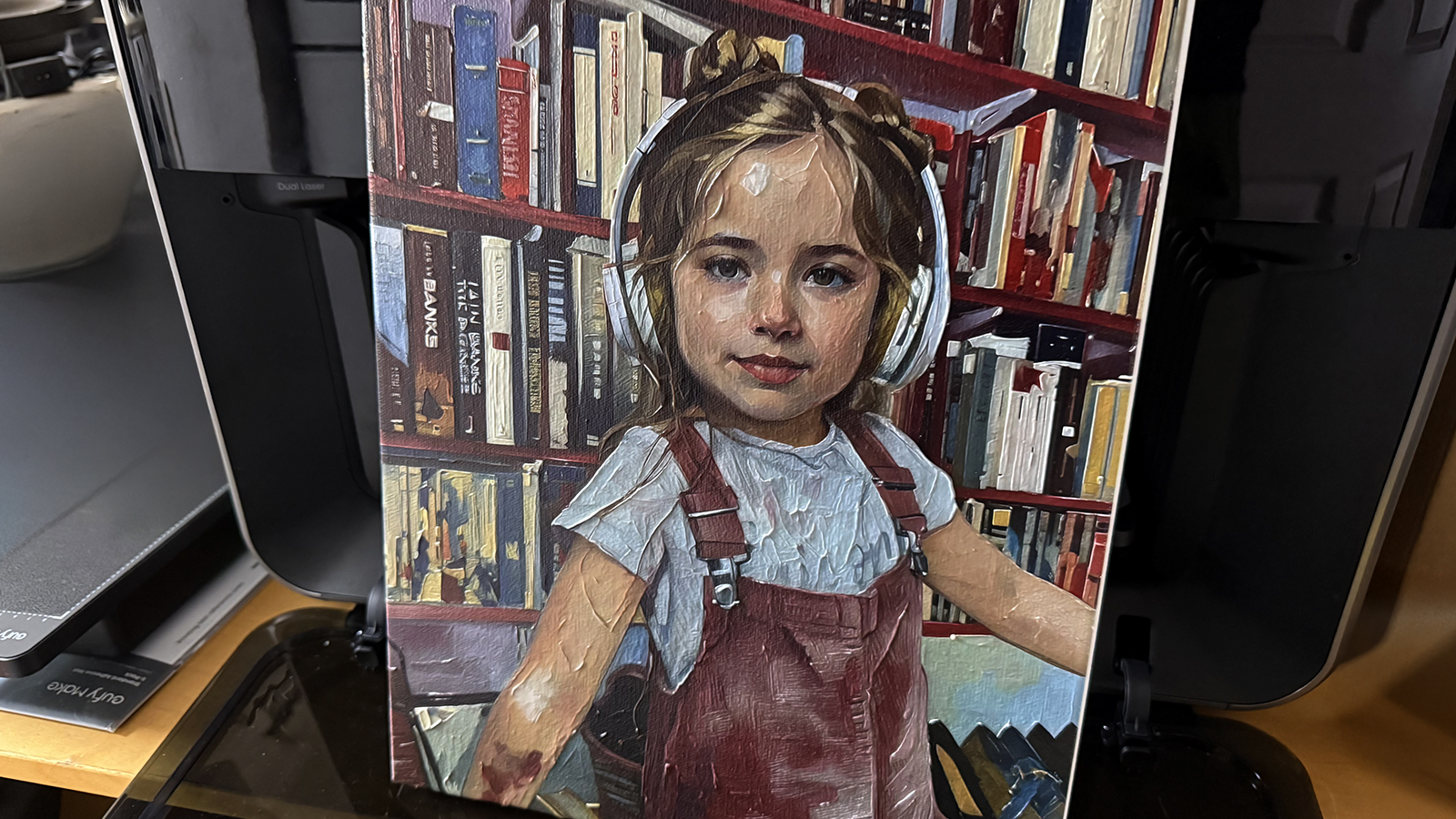
During the setup process, you install one of the print bed sheets, which does a calibration test. You can peel off the paper now, revealing the tacky surface below (which holds your materials in place, or you can swap to the larger print bed. This is done with a quick-release lever on the front and takes seconds to do.
Then place your material on the bed and take a snapshot of the bed. This serves two purposes. Firstly, it uses lasers to scan your material. You can use thicknesses up to around 60mm, and they don’t have to be perfectly flat either. Up to 5mm of surface variation is fine. Secondly, this also takes a photo, which you can see in the app, allowing you to fit your design to the material very easily. If you have any overlap, the E1 will print on the bed too. To prolong its life, I’d suggest adding a bit of masking tape around the edge of your material to catch that, although it isn’t a big deal if you don’t. The tacky print bed sheets are available in packs, so it’s a consumable part.
I started small, printing a simple photo onto a ceramic fridge magnet, resized and placed in the app. Once happy, you hit ‘create print job’ and you’re taken to the next screen, where you choose resolution and material type. There are a bunch of presets here for the most common types, but you can customise your own too.
You also get to choose what layers get printed. For a simple white magnet, CMYK is fine, but if you are printing on something non white, you can print a white base layer first. There's also the option to add a glossy top coat.
You can see a couple of the ceramic results here, as well as some prints on canvas and wood. Every result turned out very impressive, even at the standard 70dpi (high quality is 1440 dpi and takes a little longer to print).
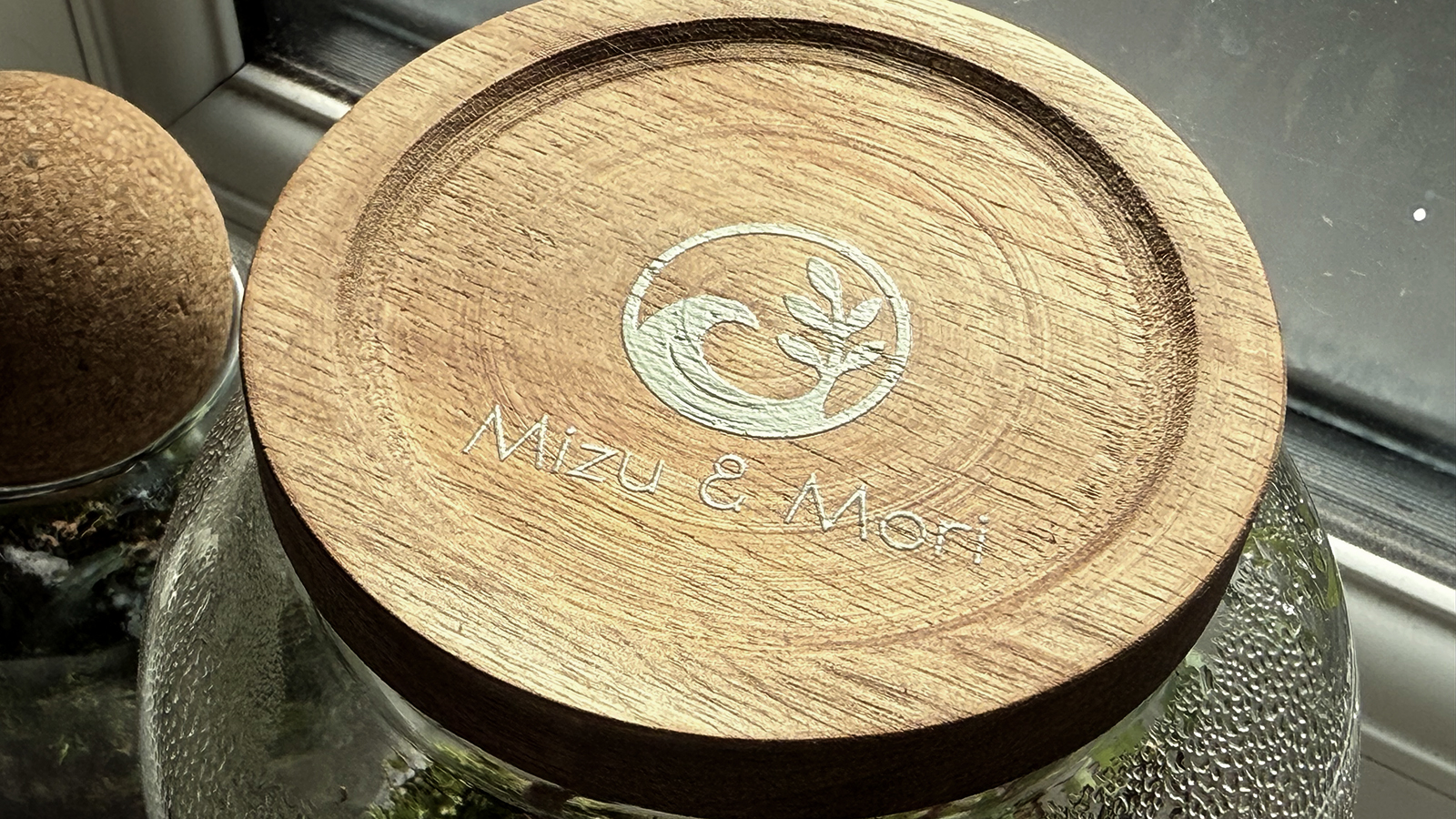
Next I wanted to try something I’ve not done before: printing on glass for clear acrylic, to create a light box. Normally with the E1, you would print a white base layer, but in this case, you print CMYK only, which gives a transparent, almost stained glass look. Again, results were excellent, but this can be taken further by printing separate layers, so that when the light is off, you see just the white layer with line art, but when you turn on the light, the colour shines through. This is very effective and easy to set up.
Another trick of the E1 is texture printing. The E1 uses UV inks, akin to the resin used in 3D printing, meaning you can print with depth, although limited to 5mm. The app has some AI tools to aid in creating height maps, including a handy tool for generating brush strokes from a photo. First try turned out perfectly, and the photo of my daughter I printed on canvas looks very close to impasto paint. This did take a while as it builds up layer by layer. All in all, the total run time for this A3 print with a maximum height of 3mm was around four hours. All things considered, I think that’s not bad and it really showcases the versatility of the machine.
Printing onto wood works a treat too. I tried printing on ply, with a slightly rough surface, and the results speak for themselves. There’s talk of a conveyor which would be good for signage, skateboards and larger batch printing.
AI is seen as a dirty word by some, especially amongst the art community and, while the E1 has some generative features, AI is implemented here in a way that aids creativity, rather than replacing it. As I mentioned earlier, the eufyMake app can create brush strokes from your photos or art, to add depth to an image, or it can add height, do face swaps or convert your images into a different style and, fun as these things are, I can't see myself using them all the time. I think the core strength of the E1 is its print quality when using a massive range of materials. It’s really very impressive when you think about it. This is really the only option, other than expensive bureau services, for this kind of thing. But it’s nice to have these options, and for some, they could well be key factors in a buying decision.
The E1 should ideally be left on, as it does run through some background processes, keeping the ink nozzles moist, cleaning and so on. It’s quiet enough when doing this, and you can turn off audio alerts. I did notice some odour, but nothing too intrusive, although I would suggest an open window might be wise. I doubt any fumes are harmful; otherwise you’d expect to see some kind of extraction port. That said, the open nature of the machine means that it would have limited capability anyway.
Note: Come back soon to see my thoughts on the DTF laminator and rotary accessories for this.
eufyMake E1: Price of printing
The E1 is From £1257 early-bird price, dependent on bundle, but that's only part of the equation. I’ve seen a lot of questions online about the cost of ownership of the E1, and those are valid. All printers come with a cost associated with consumables, but this is the first of its kind in the home market, so there is really no benchmark. That said, the software does tell you how much ink is being used for a job, so you can work it out. The A3 print with depth came out at just under £1.82, and the ceramic magnets were about £0.08. I think these are very reasonable prices. Yes, a set of inks may be costly, but depending on what you are printing, they are fair. As it stands, you do have to use the Eufy-branded inks, but who knows, maybe third-party options will be released. I for one will probably stick with eufyMake, as they are consistently high quality and I would say cost-effective too.
Buy it if
- You like to customise things for clients and/or gifts
- You need the ability to print on a large selection of materials
Don't buy it if
- A good paper inkjet already covers enough ground for you
out of 10
Considering all that this machine can do, is the eufyMake E1 worthy of investment? I’d say it is a resounding yes, but only if printing on materials other than paper is useful, which sounds obvious. If you are an artist looking to sell prints in a novel way, or a maker looking to sell a variety of designs and customisations, then this is a no-brainer. eufyMake says it is a business in a box, and they are right. It performs really well, every time. It pretty much looks after itself too, so very little by way of regular maintenance is needed, and each print is cheaper than using a UV printing service.

Rob Redman is the editor of ImagineFX magazines and former editor of 3D World magazine. Rob has a background in animation, visual effects, and photography.
You must confirm your public display name before commenting
Please logout and then login again, you will then be prompted to enter your display name.
